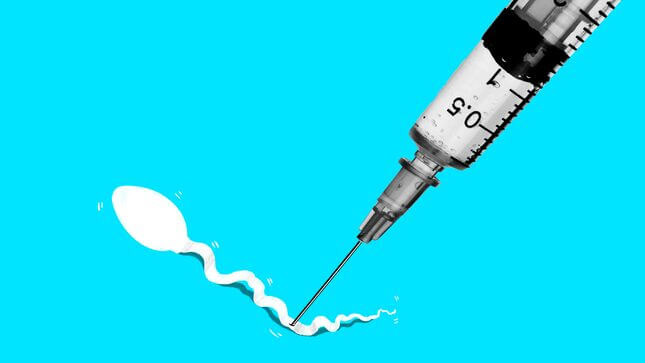What The Hell Is Going On With Male Birth Control
We need contraceptive options for all parties more than ever, but research is slow because pharma companies aren't interested.
In DepthIn Depth

Heather Vahdat gets how frustrated people are to read breathless headlines about research on birth control for men, proclaiming it’s coming soon, when it is still not even close to going on the market. She still remembers an email she received from a person who said he got a vasectomy “because you guys are just taking too damn long.”
Vahdat is the executive director of the Male Contraceptive Initiative (MCI), which supports the development of non-hormonal methods for men and anyone with a penis. Data shows that men are interested in options beyond vasectomies and condoms, contradicting some well-worn narratives, but they’re tired of waiting for the clinical trials process to run its course. Women are obviously also tired. As a March 2018 Jezebel headline read: “The Male Birth Control Pill Is Right Around The Corner, We Swear, We Can Almost See It, Just Keep Taking Your Pills, Ladies.” Vahdat works in this space as someone who’s had “really crummy side effects from contraception my whole life,” she told Jezebel.
Time is of the essence for many people who want better reversible options to prevent pregnancy. In the three to four years since the last round of overly optimistic coverage of progress in male birth control, more states have moved to ban abortion, and the Supreme Court now looks poised to drastically weaken or overturn Roe v. Wade.
We need contraceptive options now more than ever, but research is slow because pharma companies aren’t interested—it’s the US government, non-profits, and private donors funding their development. We’re still about 10 years away from anything hitting the market—maybe five if the stars align. (As a reminder, emergency contraception is available for about $8 per dose online, and people in all 50 states can order abortion pills before they’re pregnant so they can have it on hand just in case.)
-

-

-

-

-

-

-

-

-

-

-

-

-

-

-

-

-

-

-

-

-

-

-

-

-

-

-

-

-

-

-

-

-

-

-

-

-

-

-

-








































